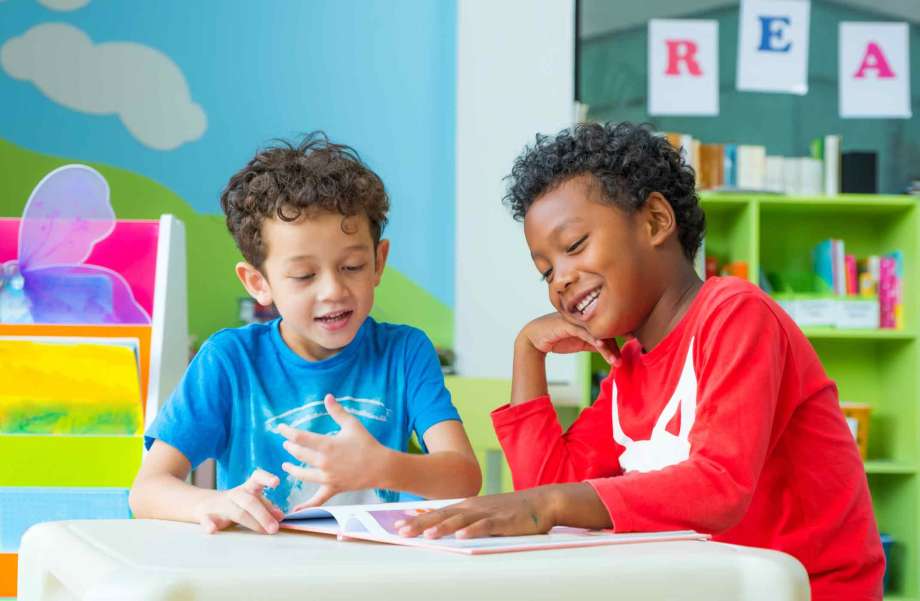Is Your Kid a Visual, Auditory or Kinesthetic Learner?

The National Institutes of Health (NIH) estimates that the incidence of learning disabilities in the general population is 15 to 20 percent. About 4 percent of children in the United States are classified as having a learning disability.
Unfortunately, this diagnosis is often viewed as a hindrance rather than an opportunity for growth and understanding. Individuals diagnosed with learning disabilities are not "stupid." In fact, to qualify as having a learning disability, you must have average intelligence.
More: Learning Disabilities: Warning Signs in Teens
Types of Learning Styles
Students who have learning disabilities have one commonality, a processing deficit that interferes with their learning. Nevertheless, it is important to remember that every individual learns differently and thus has a unique learning style.
"Approximately 20 to 30 percent of the school-aged population remembers what is heard; 40 percent recalls well visually the things that are seen or read; many must write or use their fingers in some manipulative way to help them remember basic facts; other people cannot internalize information or skills unless they use them in real-life activities, such as actually writing a letter to learn the correct format." (Teaching Students to Read Through Their Individual Learning Styles, Marie Carbo, Rita Dunn, and Kenneth Dunn; Prentice-Hall, 1986, p.13.)
For some, auditory input is most valuable; others rely upon a visual style. Still others learn through kinesthetic means, or a combination of the three. Every person has one primary learning mode. Once you identify that mode, you can learn to maximize it and enhance your child's education.
Auditory Learners
Auditory learners tend to benefit most from traditional teaching techniques. Many teachers use a lecture-style forum, presenting information by talking to their students. Regulating voice tone, inflection and body language will help all students maintain interest and attention. Auditory learners succeed when directions are read aloud, speeches are required, or information is presented and requested verbally.
Visual Learners
Some students rely upon a visual learning style: "Show me and I'll understand." Visual learners benefit from diagrams, charts, pictures, films and written directions. These students will value to-do lists, assignment logs and written notes. Many of these techniques, however, also benefit kinesthetic learners.
More: Homeschooling: Determining Each Child's Learning Style
Kinesthetic Learners

Most of the school population excels through kinesthetic means: touching, feeling, experiencing the material at hand. "Children enter kindergarten as kinesthetic and tactual learners, moving and touching everything as they learn. By second or third grade, some students have become visual learners. During the late elementary years some students, primarily females, become auditory learners. Yet, many adults, especially males, maintain kinesthetic and tactual strengths throughout their lives."(Teaching Secondary Students Through Their Individual Learning Styles, Rita Stafford and Kenneth J. Dunn; Allyn and Bacon, 1993)
Kinesthetic learners are most successful when totally engaged with the learning activity. They acquire information fastest when participating in a science lab, drama presentation, skit, field trip, dance or other active activity. Because of the high numbers of kinesthetic learners, education is shifting toward a more hands-on approach; manipulatives and other "props" are incorporated into almost every school subject, from physical education to language arts. Hands-on teaching techniques are gaining recognition because they address the challenging needs of kinesthetic learners, as well as the diverse needs of auditory and visual learners.
As research and teacher inservicing continue, classrooms will continue to integrate more of these techniques. Once students understand their learning styles, they can better adapt to their learning environment.
Throughout the educational process, students enter many arenas. In elementary school, they are away from home, adjusting to the demands of the teacher. As they progress to middle/junior high school, students suddenly have multiple teachers, in multiple rooms, with increased homework. High school brings even more teachers, more homework, more peer pressures — all of which can be overwhelming.
When your child identifies his or her unique learning style, you can begin to build upon it. Understanding learning styles is only a first step in maximizing potential and overcoming learning differences.

